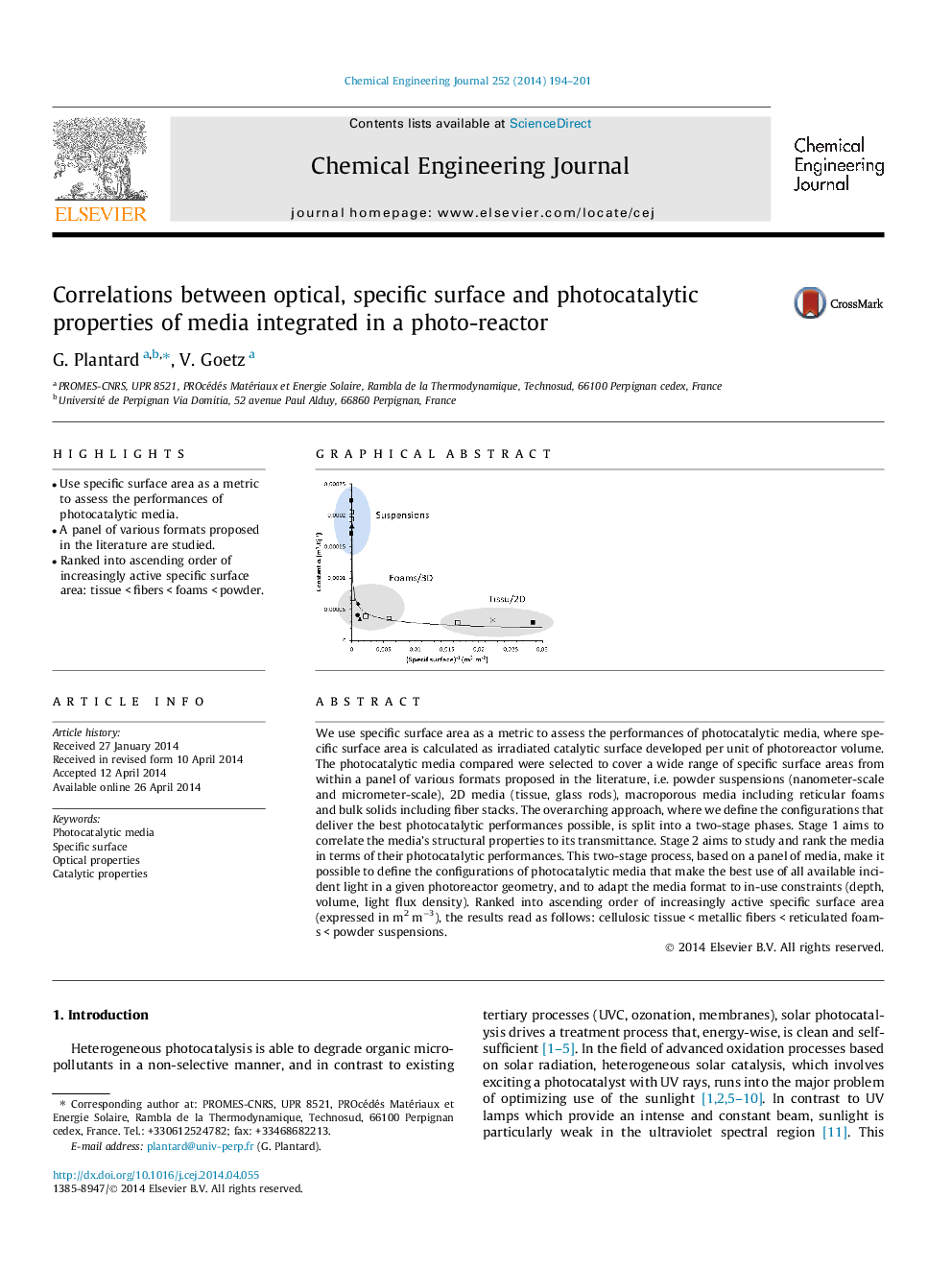| Article ID | Journal | Published Year | Pages | File Type |
|---|---|---|---|---|
| 147135 | Chemical Engineering Journal | 2014 | 8 Pages |
•Use specific surface area as a metric to assess the performances of photocatalytic media.•A panel of various formats proposed in the literature are studied.•Ranked into ascending order of increasingly active specific surface area: tissue < fibers < foams < powder.
We use specific surface area as a metric to assess the performances of photocatalytic media, where specific surface area is calculated as irradiated catalytic surface developed per unit of photoreactor volume. The photocatalytic media compared were selected to cover a wide range of specific surface areas from within a panel of various formats proposed in the literature, i.e. powder suspensions (nanometer-scale and micrometer-scale), 2D media (tissue, glass rods), macroporous media including reticular foams and bulk solids including fiber stacks. The overarching approach, where we define the configurations that deliver the best photocatalytic performances possible, is split into a two-stage phases. Stage 1 aims to correlate the media’s structural properties to its transmittance. Stage 2 aims to study and rank the media in terms of their photocatalytic performances. This two-stage process, based on a panel of media, make it possible to define the configurations of photocatalytic media that make the best use of all available incident light in a given photoreactor geometry, and to adapt the media format to in-use constraints (depth, volume, light flux density). Ranked into ascending order of increasingly active specific surface area (expressed in m2 m−3), the results read as follows: cellulosic tissue < metallic fibers < reticulated foams < powder suspensions.
Graphical abstractFigure optionsDownload full-size imageDownload as PowerPoint slide
